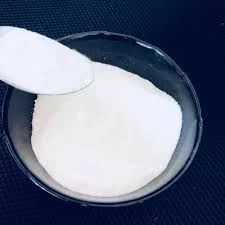
Nov . 28, 2024 23:29 Back to list
Current Trends in RDP Powder Pricing and Market Insights
The Impact of RDP Powder Prices on the Market
Recently, the market for RDP (Redispersible Polymer Powder) has been experiencing significant fluctuations in pricing, prompting discussions about the underlying factors driving these changes and their implications for various industries. RDP powder, renowned for its versatility in enhancing the performance of construction materials, has become an essential component in products like tile adhesives, mortars, and facade coatings. As its demand surges, understanding the dynamics of RDP powder pricing is crucial for manufacturers, suppliers, and consumers alike.
Factors Influencing RDP Powder Prices
1. Raw Material Costs One of the primary influences on the pricing of RDP powder is the cost of raw materials used in its production. The price of petrochemical derivatives, particularly vinyl acetate and ethylene, directly affects the cost of RDP manufacturing. Fluctuations in oil prices can lead to increased or decreased raw material costs. As a result, manufacturers often need to adjust their prices accordingly, which can lead to variability in market prices for RDP powder.
2. Supply Chain Disruptions Recent global events, such as the COVID-19 pandemic and geopolitical tensions, have underscored the fragility of supply chains. Disruptions in the transportation of raw materials and finished products can lead to shortages or surpluses in the market, affecting prices. For instance, delays in shipments can reduce supply, pushing prices higher. Conversely, an oversupply resulting from production ramp-ups can cause prices to drop.
3. Technological Advancements As the construction industry evolves, the development of more advanced production technologies has introduced efficiencies that can impact pricing. Manufacturers that invest in innovative production processes may lower their costs over time, allowing them to offer competitive prices. However, the initial investment in technology can lead to higher prices in the short term, as companies recoup their costs.
rdp powder price

4. Market Demand The demand for RDP powder is closely linked to trends in the construction and building materials sector. As urbanization accelerates and infrastructure projects proliferate globally, the demand for high-performance construction materials increases. This heightened demand can lead to price hikes. Additionally, shifts in consumer preferences towards sustainable and high-quality products can create opportunities for premium pricing strategies.
Implications of Price Changes
The fluctuations in RDP powder prices have direct implications for various stakeholders in the construction industry. For manufacturers of construction materials, rising RDP powder prices can squeeze profit margins, particularly for those unable to pass on costs to consumers. Builders and contractors may face increased project costs, which could lead to higher prices for end consumers.
On the other hand, stable or declining RDP powder prices can foster innovation and investment in new product development. It can also stimulate growth within the construction sector as builders can maintain competitive pricing without sacrificing quality.
Conclusion
The pricing of RDP powder is intertwined with a complex web of factors, including raw material costs, supply chain dynamics, technological advancements, and market demand. Stakeholders in the construction industry must stay informed about these trends to make strategic decisions that align with market conditions. As the industry continues to evolve, the ability to adapt to changes in RDP powder pricing will be crucial for maintaining competitiveness and ensuring project viability in an increasingly demanding market. Understanding these nuances will not only aid in navigating current challenges but also in seizing future opportunities within the construction landscape.
-
Versatile Hpmc Uses in Different Industries
NewsJun.19,2025
-
Redispersible Powder's Role in Enhancing Durability of Construction Products
NewsJun.19,2025
-
Hydroxyethyl Cellulose Applications Driving Green Industrial Processes
NewsJun.19,2025
-
Exploring Different Redispersible Polymer Powder
NewsJun.19,2025
-
Choosing the Right Mortar Bonding Agent
NewsJun.19,2025
-
Applications and Significance of China Hpmc in Modern Industries
NewsJun.19,2025







